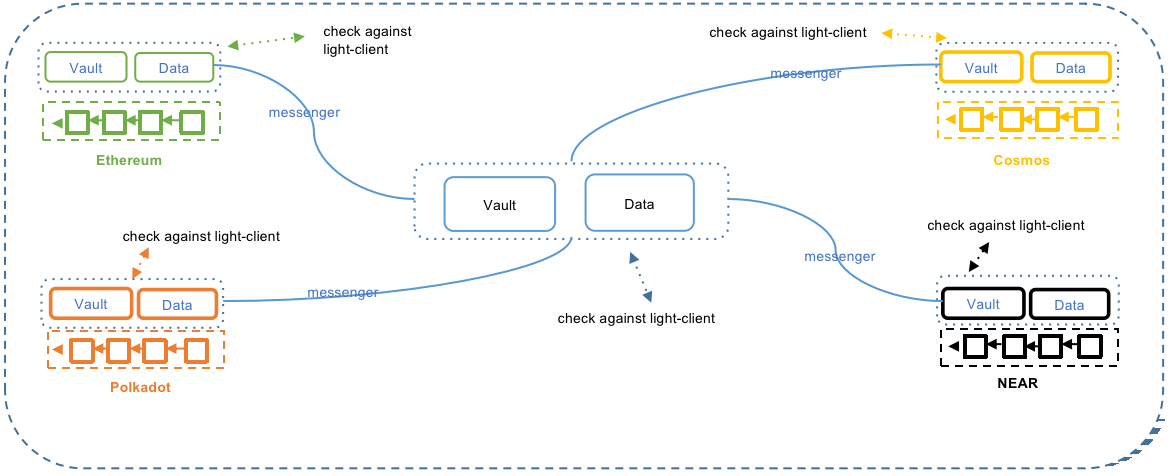Introduction
In the burgeoning landscape of decentralized applications (DApps), interoperability remains a crucial yet challenging goal. The MAP Protocol addresses this need with its innovative MAP Omnichain Service (MOS), which provides a suite of common modules necessary for cross-chain DApps. This structured article will delve into the intricacies of MOS, illustrating its pivotal role in streamlining the development of cross-chain DApps and ensuring secure asset management.
MAP Omnichain Service (MOS): An Overview

At its core, the MOS is designed to simplify the development process for creators of cross-chain DApps. By offering commonly needed modules, it enables developers to focus on the unique aspects of their applications, such as swap mechanisms, rather than the underlying cross-chain infrastructure. However, recognizing that one-size-fits-all solutions are impractical, MOS also equips developers with the tools necessary to customize and extend existing modules, catering to the diverse needs of cross-chain DApps.
Asset Management and Security
One of the most critical aspects of cross-chain transfers is asset management, which can be fraught with errors and security risks, often exacerbated by the presence of super admins with access to user funds. MOS addresses these concerns with its robust AssetVault module. This bulletproof construct eliminates privileged admins, ensuring that all asset-related operations are triggered only by cross-chain messages backed by valid cryptographic proofs, such as Merkle proofs. These proofs are rigorously verified against information from light clients, reinforcing the trustless nature of the system.
Illustrative Workflow: Cross-Chain Transfer Using AssetVault
Let's consider a scenario where Alice wishes to transfer 100 USDC from Ethereum to Binance Smart Chain (BSC) using the MAP Protocol:
Initiation: Alice locks her 100 USDC in the AssetVault contract on Ethereum.
- Lock Event and Messenger Role: A Lock event is emitted, and a Messenger constructs a Merkle proof to validate the event. This proof is then submitted to the AssetVault on the MAP Relay Chain.
- AssetVault on MAP Relay Chain: The AssetVault verifies the cryptographic proof and instructs the mUSDC contract to mint and subsequently burn the equivalent mUSDC, signaling Alice's intent to transfer funds to BSC.
- Final Transfer to BSC: Another Messenger submits a transaction to the AssetVault on BSC, containing the necessary proofs. Upon validation, the AssetVault transfers 100 USDC to Alice's address on BSC, completing the cross-chain transfer.
Components of MAP Omnichain Services (MOS)
- Messenger: This independent inter-chain program listens for relevant events, constructs proofs on the source chain ledger, and transmits messages to the Vault or Data on the destination chain. It operates with high concurrency and is resilient against malicious attacks, safeguarding assets and maintaining the integrity of cross-chain transactions.
- Vault & Data: On the source chain, these components receive assets or data, triggering events for Messengers. On the relay or destination chain, they receive cross-chain messages, verify transactions via Light-Clients, and record instructions. They offer the flexibility to be deployed by dApp developers, who can also tap into shared liquidity pools via MOS.
Conclusion
MAP Omnichain Service (MOS) represents a significant stride in the pursuit of a truly interoperable blockchain ecosystem. By equipping developers with a robust infrastructure and ensuring secure, trustless asset transfers, MOS is not just a tool but a catalyst for innovation in the realm of cross-chain DApps. As the blockchain landscape continues to evolve, services like MOS will undoubtedly play a pivotal role in shaping its future.